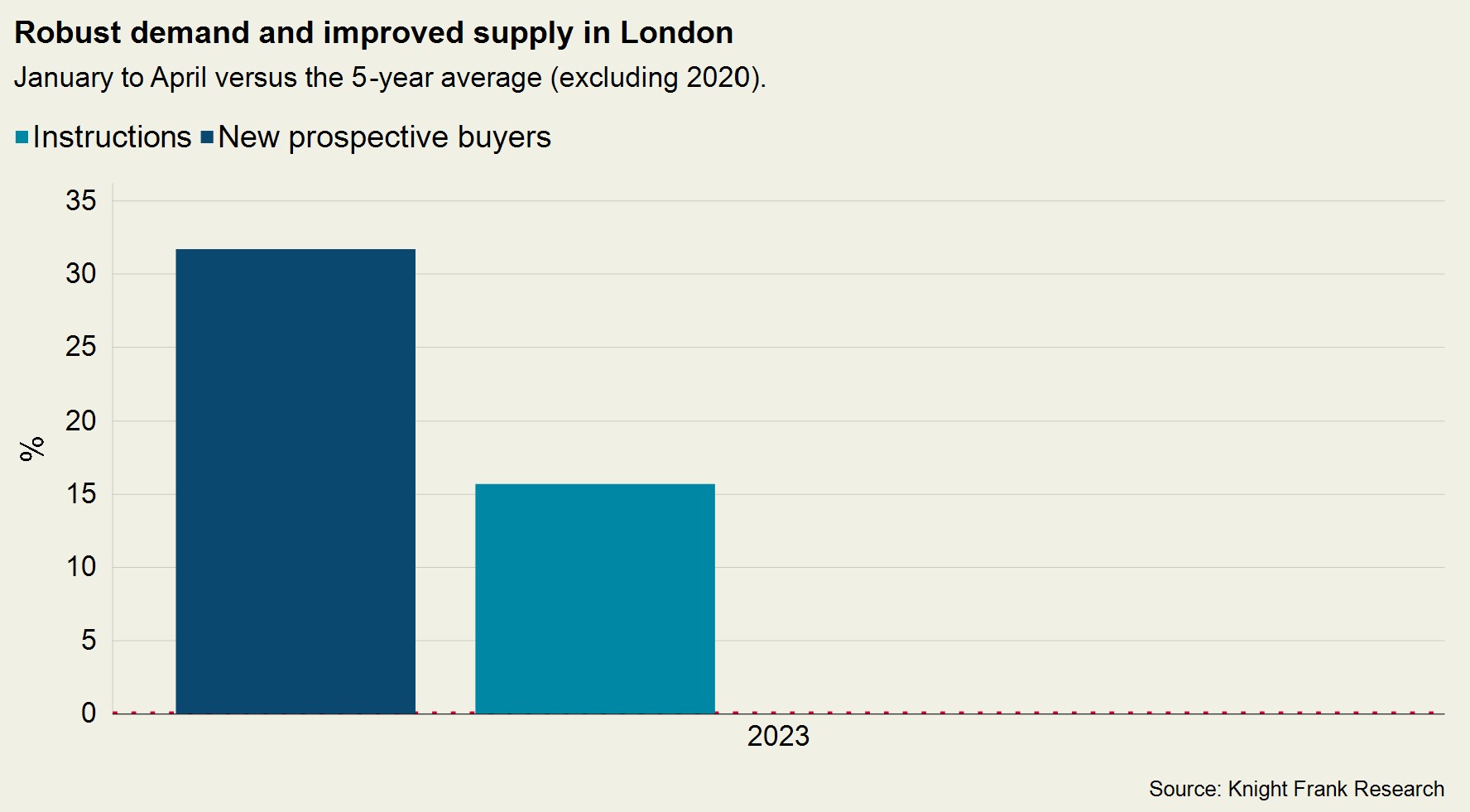UK residential market: prime property markets back on track after mini-Budget hit
Resilient demand and an increased supply driving activity.
2 minutes to read
London Sales
The mini-Budget is fast becoming a distant memory in the prime London property market.
Demand is robust, with the number of new prospective buyers 32% above the five-year average in the first four months of this year, excluding 2020.
Supply is also picking up and the number of sales instructions was 16% higher over the same period, which helped push the number of exchanges up by 8% (see chart).
London has benefitted as demand gravitates back towards the capital following the pandemic. Prime markets have also been buoyed by the return of international travel, a relatively weak pound, and the fact average prices in prime central London (PCL) are still 15% below their last peak in mid-2015.
Transaction activity was particularly strong in higher price brackets, with the number of exchanges above £5 million up by 40% over the same period. Below £2 million, there was a 3% decline.

Prime regional markets
While London has moved on, prime regional markets are still experiencing a mini-Budget hangover.
An analysis of the prime regional market in the first four months of 2023 lays bare the consequence of deals that weren’t done at the backend of last year because of the economic and political uncertainty unleashed by the mini-Budget.
The number of exchanges outside of London in the first four months of 2023 are down 31% on the same period last year, and 14% down compared with 2019, before the pre-pandemic.
However, despite the rising cost of borrowing, demand remains stronger than before the pandemic.
The number of new prospective buyers registering with Knight Frank in the first four months of 2023 outside of London remained the third highest in a decade (behind 2022 and 2021 respectively) and 14% higher than the same period in 2019.
Supply levels have also recovered from pandemic lows, which will support activity.
London lettings
During the first four months of this year, the number of new prospective tenants in prime central and prime outer London was 39% higher than the five-year average. Quite clearly, demand is stronger than ever.
The problem is supply. In the same period, the number of new listings was 34% lower, Rightmove data shows.
A number of landlords have left the sector in recent years after a series of tax changes means it has become more financially punitive for them, and the laws of supply and demand mean the pain is spreading to tenants.
Average rents in prime central London rose 15.4% in the year to May, while the increase was 13% in prime outer London.
Read more or get in contact: Tom Bill, head of UK residential research
Subscribe for more
For more market-leading research, expert opinions and forecasts, subscribe below.
Subscribe here